3,4,5,6-Tetrahydrophthalic anhydride
Synonym(s):Cyclohexene-1,2-dicarboxylic anhydride
- CAS NO.:2426-02-0
- Empirical Formula: C8H8O3
- Molecular Weight: 152.15
- MDL number: MFCD00005917
- EINECS: 219-374-3
- SAFETY DATA SHEET (SDS)
- Update Date: 2025-01-27 09:38:02
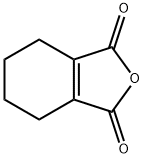
What is 3,4,5,6-Tetrahydrophthalic anhydride?
Chemical properties
White to cream crystalline powder
The Uses of 3,4,5,6-Tetrahydrophthalic anhydride
3,4,5,6-Tetrahydrophthalic Anhydride is useful in the synthesis and biological evaluation of 6-hydroxypyridazinone benzisoxazoles as an atypical antipsychotics.
Properties of 3,4,5,6-Tetrahydrophthalic anhydride
| Melting point: | 69-73 °C(lit.) |
| Boiling point: | 234.6°C (rough estimate) |
| Density | 1.2000 |
| refractive index | 1.4447 (estimate) |
| storage temp. | 2-8°C |
| solubility | Chloroform (Sparingly, Sonicated), DMSO (Sparingly) |
| form | Crystalline Powder |
| color | White to cream |
| Water Solubility | REACTS |
| BRN | 136335 |
| Stability: | Moisture Sensitive |
| CAS DataBase Reference | 2426-02-0(CAS DataBase Reference) |
| NIST Chemistry Reference | 1-Cyclohexene-1,2-dicarboxylic anhydride(2426-02-0) |
| EPA Substance Registry System | 1,3-Isobenzofurandione, 4,5,6,7-tetrahydro- (2426-02-0) |
Safety information for 3,4,5,6-Tetrahydrophthalic anhydride
| Signal word | Danger |
| Pictogram(s) |
 Corrosion Corrosives GHS05  Health Hazard GHS08 |
| GHS Hazard Statements |
H317:Sensitisation, Skin H318:Serious eye damage/eye irritation H334:Sensitisation, respiratory H412:Hazardous to the aquatic environment, long-term hazard |
| Precautionary Statement Codes |
P261:Avoid breathing dust/fume/gas/mist/vapours/spray. P273:Avoid release to the environment. P280:Wear protective gloves/protective clothing/eye protection/face protection. P302+P352:IF ON SKIN: wash with plenty of soap and water. P305+P351+P338:IF IN EYES: Rinse cautiously with water for several minutes. Remove contact lenses, if present and easy to do. Continuerinsing. |
Computed Descriptors for 3,4,5,6-Tetrahydrophthalic anhydride
| InChIKey | HMMBJOWWRLZEMI-UHFFFAOYSA-N |
New Products
Indole Methyl Resin tert-butyl 9-methoxy-3-azaspiro[5.5]undecane-3-carboxylate Boc-His(Boc)-OH 2-CTC Resin 4-Chloro-7-tosy1-7Hpyrrolo[2,3-d]pyrimidine 5,7-Dibromo-1H-indole 2,5-dichloro-N-hydroxy-4,6-dimethylpyridine-3-carboximidamide 2,2-Dimethoxy-7-azaspiro[3.5]nonane hydrochloride 4-chloromethyl-5-methyl-1,3-dioxol-2-one (DMDO-Cl) R-2-BENZYLOXY PROPIONIC ACID 1,1’-CARBONYLDIIMIDAZOLE 1,1’-CARBONYLDI (1,2-4 TRIAZOLE) N-METHYL INDAZOLE-3-CARBOXYLIC ACID 4-((2-hydroxyethyl)thio)benzoic acid 1-(TERT-BUTOXYCARBONYL)-2-PYRROLIDINONE Methyl 6-methylnicotinate 3-Pyridineacrylic acid tert-Butyl carbazate TETRAHYDRO-2H-PYRAN-3-OL 2-((4-morpholinophenylamino) (methylthio) methylene) malononitrile 3-(4-morpholinophenylamino)-5-amino-1H-pyrazole-4-carbonitrile 2,4-dihydroxybenzaldehyde 1,3-Diethyl-1,3-Diphenylurea Methyl 2-methylquinoline-6-carboxylateRelated products of tetrahydrofuran
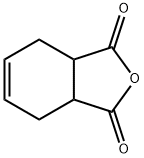
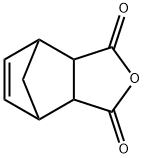
![Ethylene glycol, diethylene glycol, tetrahydrophthalic anhydride, maleic anhydride resin-furandione and 2,2'-oxybis[ethanol]](https://img.chemicalbook.in/CAS/20211123/GIF/25749-47-7.gif)
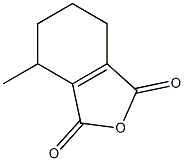
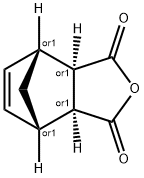



You may like
-
 1-Cyclohexene-1,2-dicarboxylic Anhydride CAS 2426-02-0View Details
1-Cyclohexene-1,2-dicarboxylic Anhydride CAS 2426-02-0View Details
2426-02-0 -
 3,4,5,6-Tetrahydrophthalic anhydride CAS 2426-02-0View Details
3,4,5,6-Tetrahydrophthalic anhydride CAS 2426-02-0View Details
2426-02-0 -
 3,4,5,6-Tetrahydrophthalic anhydride CAS 2426-02-0View Details
3,4,5,6-Tetrahydrophthalic anhydride CAS 2426-02-0View Details
2426-02-0 -
 3,4,5,6-Tetrahydrophthalic AnhydrideView Details
3,4,5,6-Tetrahydrophthalic AnhydrideView Details
2426-02-0 -
 Pyridine 99.5% HPLC /UV SpectroscopyView Details
Pyridine 99.5% HPLC /UV SpectroscopyView Details
110-86-1 -
 Dibutyl PhthalateView Details
Dibutyl PhthalateView Details
84-74-2 -
 Imidazole Spot supply, competitive priceView Details
Imidazole Spot supply, competitive priceView Details
288-32-4 -
 Thiourea 99% ARView Details
Thiourea 99% ARView Details
62-56-6
Statement: All products displayed on this website are only used for non medical purposes such as industrial applications or scientific research, and cannot be used for clinical diagnosis or treatment of humans or animals. They are not medicinal or edible.
